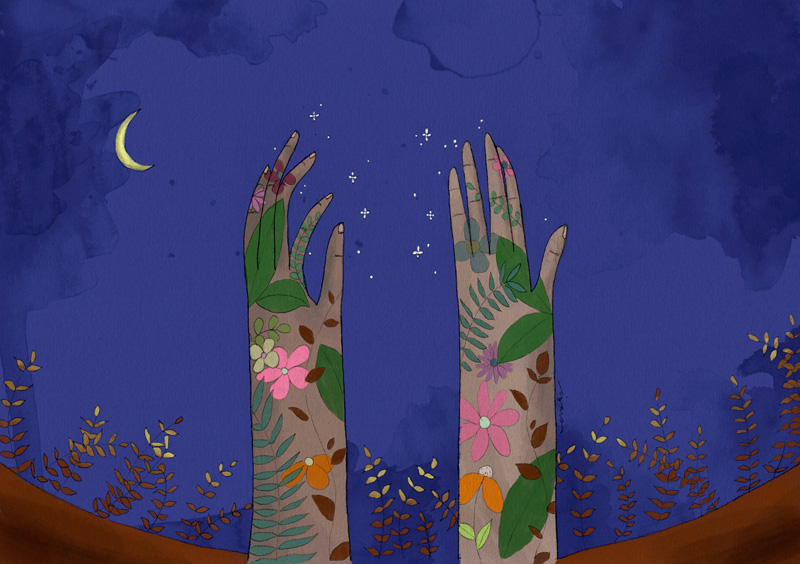
- Rei, the universe and Ki, the energy, the energy of the universe. It is the name that receives therapy that aims to transmit energy to the body through the hands to balance what is in imbalance.

This form of medicine comes from Japan, developed by Buddhist Mikao Usui in 1922. Its goal is to balance physical and energetic bodies. According to experts, the balance between physical, emotional, spiritual and mental is what compensates. This energy is transported by people in the Reiki therapy, we are channelers. We take it out of our head and pass it on to ourselves and to other people.
Nekane García Arbelaiz began studying therapy in 2007 and, taking into account the benefits she has brought to her and her family, decided to take the diploma of professor. Now you have a consultation in Hendaia: “I have been studying natural therapies and personal development for many years: Reiki, coaching, naturopathy, kinesiology, tapping, Bach Flowers, healthy eating, meditation... Among other things, it has helped me better manage my emotions, recover my intuition, view life more positively and have more energy. I wanted to teach it to others.”
García offers workshops to learn Reiki and tells us that more and more people are coming together. “About 60 people, of different ages and forms, receive the course each year. I do them every two months and if you create the group I do it before,” he tells us. “Society is increasingly aware that much of our well-being and health is in our hands. Thus, the highest percentage of what is approaching is improving the quality of life: living without anxiety and depression, living with joy, energy and emotionally in balance”.
Lierni Arrieta Irureta has already received this course. He explains that there are four “levels”. He's done the first, twice. Hendaia and Durango. He says it was a one-day course and then they had to do exercises for about three weeks and about ten minutes a day.
Arrieta began involuntarily approaching Reiki when she was a mother. She started with communication and connection massages with the children. But then I wanted more. Her father's diagnosis of Alzheimer's also drove her to it. Today you use Reikia at home and at home, especially with yourself: “When I wake up at night and I cannot sleep, when I get angry, when the children are sick, when I approach the father...” Besides the energy the hands transmit, Arrieta admires the moment, takes that time and connects with you and the other: “We don’t take moments when we haven’t done anything. If she doesn't sleep, there's no silence, no silence. Even when you're doing the other, you're thinking about the other, the other. We don’t do that many times, and it’s a gift.” He adds that the placement of hands in different parts of the body also narrows the connection with the body: “When you’re reviewing the bitch of the roots, for example, the brain says: Get entrenched! You're here, and this is the reality."
Reiki, on the other hand, is used to calm diseases, not always as a medication. Arrieta gives us an example: “A friend’s grandmother was sick, agonizing, and had a quiet death with Reiki.” Garcia added that it is of great help in the case of serious and chronic diseases, as it helps to stay lively. The World Health Organization (WHO) has approved Reiki, which is being used in more CAV hospitals.
Arrieta stressed that we should value what is useful to oneself: “A person may need this disease in their own experience and that must also be accepted. Each one will follow his path and Reiki will help soften it. When my children are sick and I do them to Reiki, I have seen them better. But maybe it's because they had to get better. I don’t know how to measure that.”